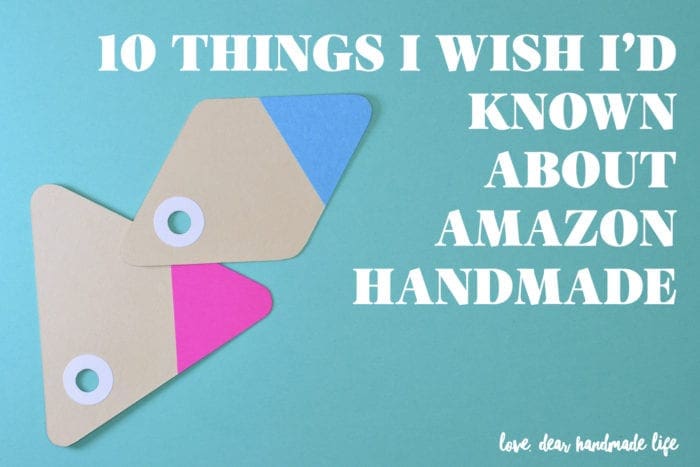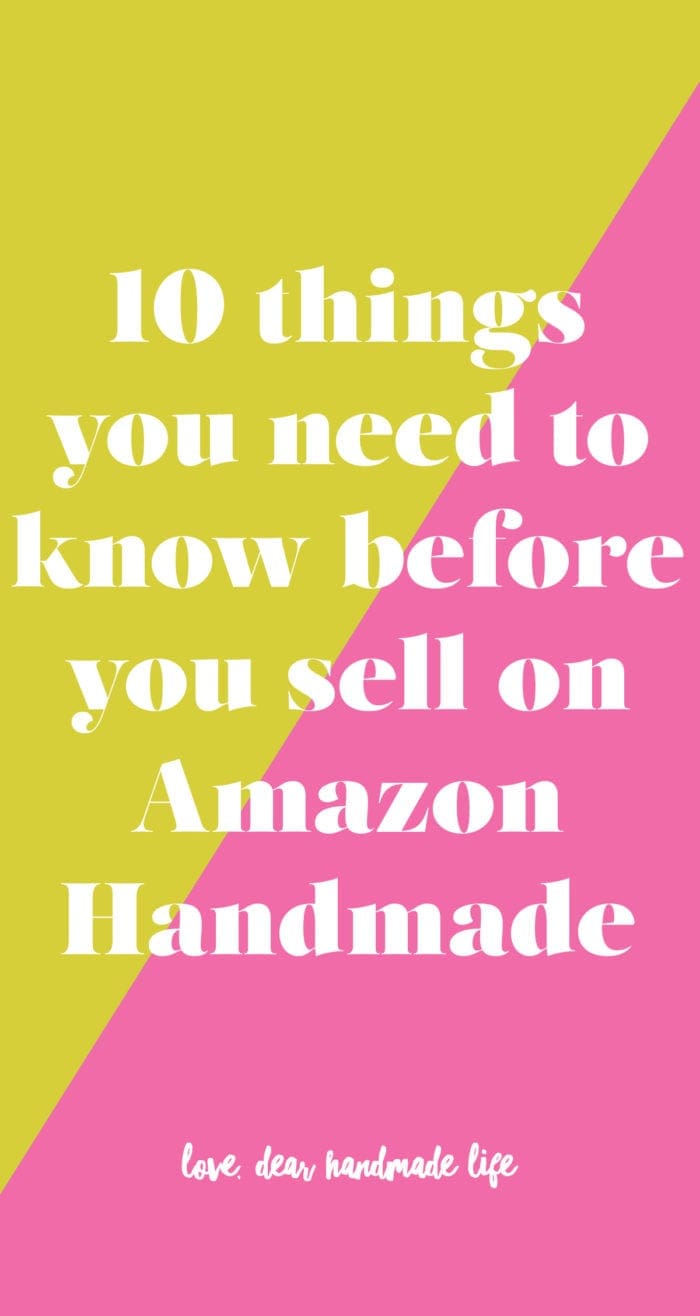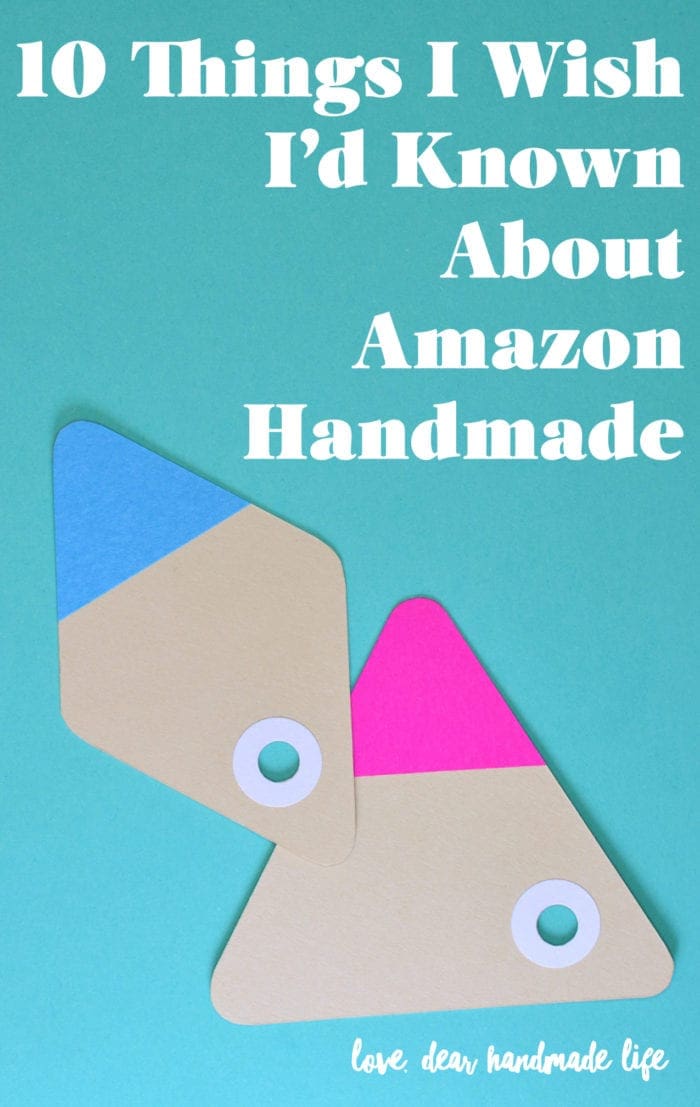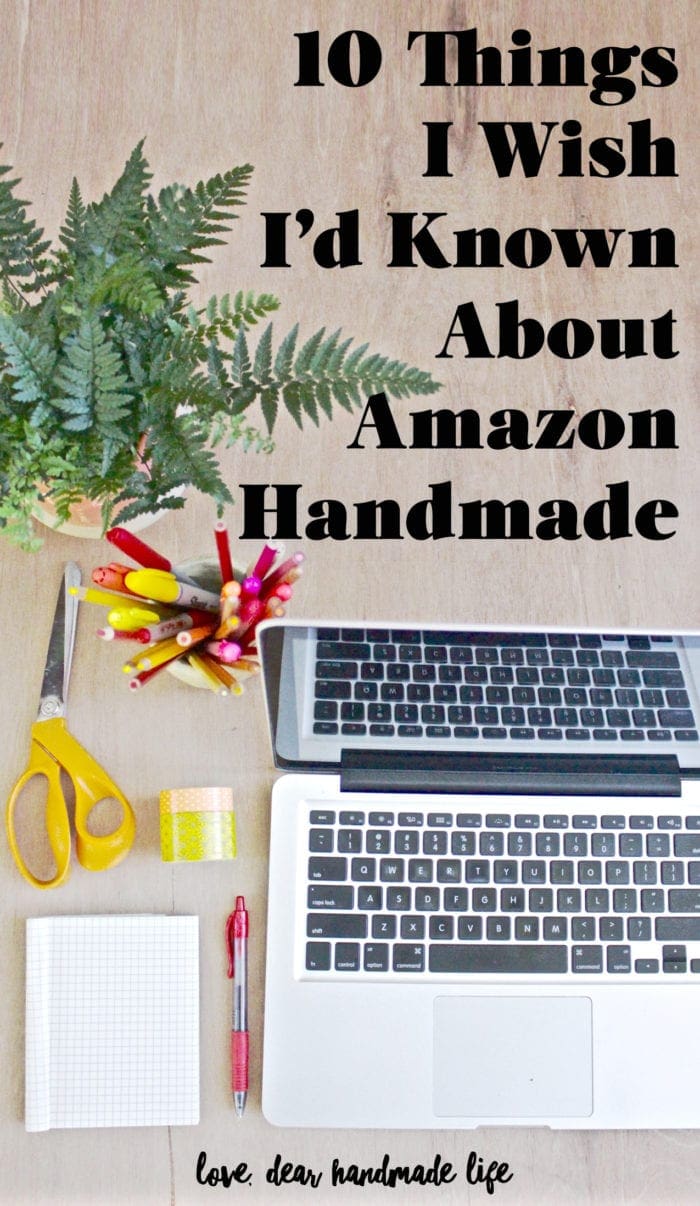10 Things I Wish I’d Known About Amazon Handmade
Editor’s Note: We’re excited to welcome Amanda Siska of Bread and Badger to our blog to share 10 things she wish she’d known about Amazon Handmade before she opened up her storefront there. In this post we shared about why makers should diversify where they sell online, we talked about how selling on multiple platforms (ie: Etsy, Amazon Handmade, your own website etc.) can help makers weather economic ups and downs, reach a new audience, gain a fresh perspective and more. If you’re ready to expand where you sell online and are considering adding Amazon Handmade to your platforms, Amanda has tons of great insight to help you shorten the learning curve and maximize your efforts creating your Amazon Handmade shop. FYI: There are zero upfront costs and no monthly fees to get your products in front of Amazon’s 250 million customers worldwide! Sure, it takes a bit of time to set up a new online shop but if you already have the basics in place (photos, product descriptions etc.) like Amanda does, it’s pretty quick and the makers I know who have Amazon Handmade shops say the maintenance is low compared to their sales – creating a high ROI. One of our goals for 2019 is to set up our own Amazon Handmade shop for our new line of maker-inspired tees and pins. If you’re interested in setting up your Amazon Handmade too, you can learn more here.
-Nicole S.

My name is Amanda Siska, and I’ve been selling my original designs sandblasted onto drinkware through by business Bread and Badger. I started on Amazon Handmade in the summer of 2015. Before that, I had a Professional Amazon seller’s account, and I’ve sold on Shopify and Etsy for over a decade. When I first heard about Handmade at Amazon, I jumped at the chance to sell there, and I’d like to share some of the things I wish I’d known before I got started.
1. Account Approval
In order to sell on Amazon Handmade, you need to apply for an account, and wait for them to decide if you’ll be approved or not. It’s not as easy as just signing yourself up, and then adding products on the same day, and it could even take a few weeks for the process.
Your products must also fit into one of their listing categories, so not everything is allowed yet. For instance, when I joined in 2015, jewelry wasn’t an approved category, but it’s been added since then. If you don’t see the category your products fit into, check back in a few months.
Once you’ve applied, you’ll have to wait to hear back before you can set up your account. I don’t know anyone who’s been turned down, but I do know some people who had to wait up to three months for a response. I only had to wait four weeks, and it may be quicker these days.
If you already sell on Amazon through a Professional or Individual account, you’ll probably want to consider closing it once you’re approved for Handmade. I found it hard to juggle both shops, since the set up is different for each one, and I didn’t want to be competing with myself. You’ll also be charged additional fees if you sell over a certain amount in your Pro account while maintaining a Handmade shop.
2. Artisan Profile
One thing I love about Amazon Handmade is the Artisan Profile you get to set up. Regular Amazon sellers don’t have a personalized profile for themselves, but Handmade sellers get to upload a photo of themselves, a large shop banner, featured products linked within your banner, and have a place to talk about making custom products (if you choose to do so). There’s even a little graphic with your home state, to show off how local you are!
This is a great place to introduce yourself and show off your craft, to bring some humanity to the Amazon shopping experience.
3. No UPC Codes Needed
I started selling on Amazon with a Pro account before Handmade was launched, and in order to list a product, each item needed a unique UPC code. I bought these in bulk from another website, but the cost really added up with the hundreds of variant styles and colors I offer.
Handmade doesn’t require UPCs, so you can start adding products immediately without any listing fees! This means you don’t have to worry about keeping your shop small, because there’s no cost to adding hundreds of items.
4. Listing Creation
I was hoping that I could import my whole catalog from Etsy or my Shopify store, but Amazon requires Handmade sellers create each listing one at a time. (There’s actually a place in your Seller Central). It’s similar to Etsy, in that there are only a few pages to fill out, with details for item size, weight, packaging, style, etc. There are not a lot of fields for keywords, so be very specific and use long-string keywords (more than one word for each keyword or search term field) to get the most use out of these.
To speed up the listing process, you can duplicate a listing you’ve already created, then update the title and description. Images will not be duplicated, so you’ll still need to upload them one at a time. With nine images allowed per listing, this could take awhile, but you can upload less than nine.
Amazon prefers that main listing photos have a “floating” white background, but this isn’t required for Amazon Handmade products. You should still make sure your main photo clearly shows the entire product and nothing that isn’t included in the sale, or it can confuse shoppers. But if you have a colored background that isn’t distracting from your item, then go ahead and use it. I think this helps differentiate our handmade goods from other mass-market goods on Amazon.
There’s no way to organize your catalog into collections, so your shop will sort of be a free-for-all with your most popular products showing up first, (or you can select four of your favorites manually) and the rest will be displayed as the customer chooses by popularity, price, customer reviews, or most recent. It can be hard to browse all your items if you have a large catalog like mine, but it doesn’t effect your items showing up in searches, which is how most Amazon shoppers will find you anyway.
5. Custom and Personalized Products
Do you offer personalized products? There’s an easy way to add different custom fields to your listings on Amazon Handmade, which makes it really easy for customers to select all the options they need to make a purchase from you.
Choose text or number input fields, or create a dropdown list of options for customers to choose from. You can even have different prices set for the custom options selected.
When you create each listing, you also have the option to set your production time if you know that it will take you more than one day to make and ship your product. This gives customers a reasonable expectation for when they’ll receive their order, which is especially important when deciding to order something custom made.
6. Fees & Payouts
The fee structure for Amazon is different than other e-commerce sites and even from other Amazon accounts. The fees for product sales on Amazon Handmade total 15% of the selling price including shipping charges, with no subscription or listing fees. This is lower than what I was paying with my Amazon Professional account, but it’s higher than what Etsy takes out per transaction.
Customers on Amazon are not always shopping on other sites, so you’re getting exposure to a wider audience who may not even think to search for handmade items, so I think of these fees as marketing costs. And since I don’t have to pay a listing fee for every item I offer, it allows me to have a large catalog on Amazon with no upkeep costs. More listings = more chances to be seen!
I’ve also had good luck offering discontinued designs on Amazon that aren’t selling well on my other sites. They can be in my Amazon shop indefinitely, and selling them at full price kind of offsets the cost of the transaction fees for our more popular items. Since Amazon shoppers will be seeing your handmade items alongside non-handmade products in search results, you may as well list as much as you can to be discovered.
7. Prime is Now Available to Handmade Sellers
Can you ship every business day? If so, then you can apply for Seller-Fulfilled Prime. This was an easy process that only took a few days to become verified, and now my products have a Prime banner on them, which means they’re more likely to be purchased. Amazon says some sellers see a 50% increase in sales with the Prime banner, and I’ve definitely noticed a difference in my own shop.
You can select which regions you want to offer different shipping speeds and rates to, so you won’t lose money on free overnight shipping if that’s not in your budget. Since most Amazon shoppers expect free shipping, I highly recommend adding all your shipping charges to the item price and offering free standard shipping at the very least. This allows you to compete directly with other Prime sellers, which is the whole reason to be on Amazon, right?
In order to use Seller Fulfilled Prime, you’ll need to purchase your shipping labels directly through Amazon’s Buy Shipping portal. This is super easy to use, and they offer all kinds of shipping services (UPS, Fedex, USPS, DHL, and more), so you can take advantage of these services without having to sign up for accounts with each carrier. If you do have accounts with these carriers, you can have Amazon apply your negotiated rates to your account, which could get you a better postage price than you’d otherwise get through Amazon.
I even have my Seller-Fulfilled Prime orders linked electronically to redact any off-site URLs and email addresses. This means you can’t send someone your direct email address to contact you off-site, or a link to a product listed anywhere other than Amazon.
If someone does want to purchase something custom made or otherwise not in stock, you have the ability to create a private listing and share the Amazon URL with only them. Just check the radio button to turn your listing private on the Additional Info tab of your product page, then view it on Amazon to get the URL.
I’ve found that Amazon customers almost never contact me, and our conversations are extremely short and to the point. This means we’re not really bonding the way I do with Etsy customers (who often love chatting about their purchases before and afterwards), but this gives me even more reasons to make their purchase extra special with fancy wrapping and personalized notes when they open their package.
10. Seller Ratings
Unlike other sales channels, Amazon requires that sellers keep a high approval rating in order to continue selling there. I’m not sure if Handmade accounts will be shut down for having poor ratings in any of these categories (someone at Amazon told me that late shipment penalties don’t apply to Handmade), but I still recommend aiming for 100%. I did ship a package a day late once, and I was penalized by having my expedited shipping rates removed for a few weeks.
You’re rated on:
- Customer feedback
- On-time shipments
- On-time delivery
- Time to respond to customer messages (24 hrs or less)
These ratings are shown right on your Seller Central dashboard screen, so it’s easy to keep track of them. This is helpful, because I sometimes to forget to respond to a customer message, and this dashboard reminds me if someone is waiting for a response. You can also mark conversations as “no response necessary” if needed.
Overall, I love selling on Amazon Handmade. Getting my products in front of so many customers is incredibly helpful in this competitive marketplace, and Amazon helps me reach a much wider audience than any other e-commerce site. I don’t recommend keeping all your eggs in one basket (we talk about this in our post about why makers should diversify where they sell online), so I see Amazon as an easy addition to any other sales channels you may have.
–Amanda Siska






Sounds like amazon is going to start charging handmade stores in Jan 2010 !?
I already have my handmade products in an azmazon store. Is there a way I can have all of those products moved to the handmade store?
ThAnks, I am thinking of going online to sale my crocheted items. I’m tired of crafts shows that are a hit or miss. But have no clue how to start it.
The Amazon Pro account isn’t $39 a month and required. I was charged $79 dollars and hadn’t listed an item. You can’t get through to Sellers Assistance. I tried for two days including contacting Amazon HQ in Seattle. I sell on ETSY. They are responsive, and cheaper don’t waste your money or your time.
How much time are you given to get the product to the customer? Does it just have to be shipped out within 24 hours as you cannot guarantee delivery anymore with Covid?
Very useful post thank you very much for that great content. Just starting on Amazon Handmade and is a bit confusing from the beginning with all the details.
Great Job 👌
How do you actually DO an artisan profile.